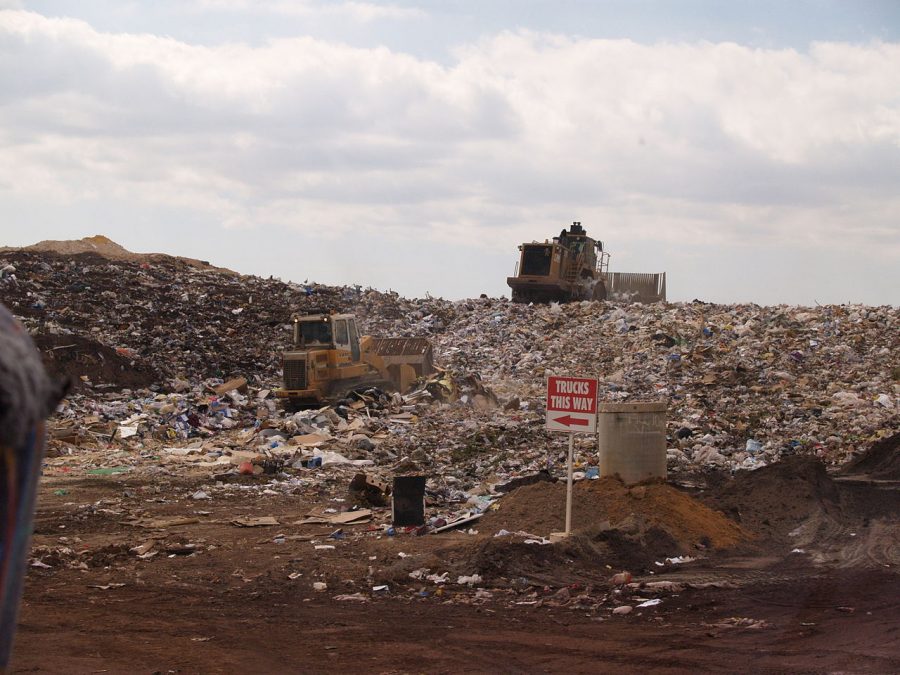Opinion | America must stop sending recyclables to landfills
Photo Courtesy of Ashley Felton
An active tipping area of an operating landfill in Perth, Western Australia is pictured above. Columnist Sandhya urges America to rethink its ideas around recycling.
October 14, 2019
Americans recycle about one-third of the waste that we produce, a result of a widely successful campaign in the 1970s called “Keep America Beautiful,” a coalition of public and corporate interests that pushed the responsibility of managing the massive amounts of single-use products in circulation onto the consumer rather than the manufacturer.
But where does our recycling go? Does it really get recycled or does it just end up in a landfill somewhere?
Good question. There’s not really a straight answer.
China started importing recyclable trash in the late 1980s, capitalizing on a cheap labor force to sort and process trash into usable raw materials, then exporting the same trash back to the countries they came from in the form of plastic products.
More than 40% of American recyclables and about 70% of the world’s plastic waste used to go to China. This was a massively profitable, symbiotic operation. Recycling companies made money selling their waste to Chinese companies, and those companies made profits selling that trash right back — so to speak.
Get The Daily Illini in your inbox!
In late 2017, seemingly in a move to reduce pollution and protect public health, China banned several forms of “foreign garbage,” including used plastics and mixed paper, and ushered in the beginning of the end of a 20-year global trading practice, leaving the recycling world in chaos.
Several recycling companies in the U.S. began to send their collected recyclables to landfills, unable to find an alternate processing route. Larger companies stockpiled recyclables in the hope China would change its mind. Many companies started finding poor countries to send their trash to now that their trash-dumping friendship with China was canceled.
Southeast Asian countries like Malaysia, Thailand, Vietnam and Indonesia became the new dumping grounds. Illegal recycling facilities and junkyards quickly began operating, often as subsidiaries of legitimate recycling plants that couldn’t handle the volume of trash coming in. These illegal operations use low-end technology and unsafe processing methods, leading to contamination of drinking water and air pollution.
Though Malaysian authorities considered capitalizing on the potentially lucrative business of recycling, citizen and environmental groups spoke out against the severely negative effects of the sudden influx of trash, from entire islands leveled by landfills to the rampant pollution. In the spring, the Malaysian government announced they were sending 3,000 tons of trash back to the countries they originated from.
Several recycling plants in the U.S. have closed their doors. Why can’t they just suck it up and process the recycling themselves?
It’s because the raw recycling that waste collection companies receive from American consumers is crap. Recycling of industrial products like iron scraps hasn’t slowed down. A large portion of the recyclables China was taking were plastics, paper and glass — mostly single-use products American consumers have gotten used to tossing in the blue bin instead of the green one.
Recycling in America has become single-stream — either you toss something in the trash, or it’s recycled. What this means for recycling companies is that the product they receive is often unusable or extremely difficult to process — torn up, soggy paper that was mixed in with glass and plastics with food residue on them, along with products that were aspirationally recycled, like dental floss and pizza boxes.
Single-stream recycling was implemented in America by large waste corporations, streamlining the process of recycling collection and transportation. Although the processing side warned that single-stream recycling created a difficult end product, American businesses were never confronted with the harsh reality of what that really meant because they were shipping their impure trash over to China.
Third world countries are not trash cans for the rich. Poor people are not expendable casualties. Unless the pattern of consumption in America changes, we’re going to be seeing quite a few more landfills outside of our own backyards, chemicals in our water and the stink of burning plastic instead of just sickly sweet bubblegum vapes.
Sandhya is a junior in LAS.







